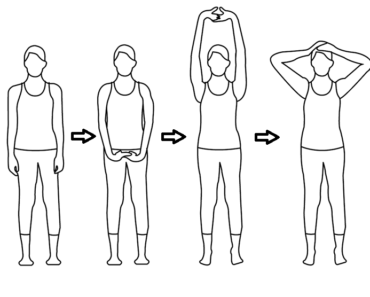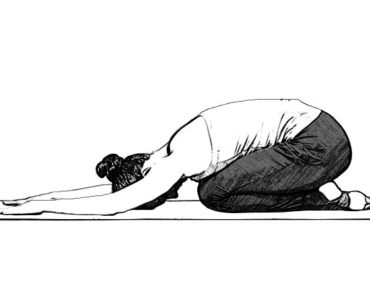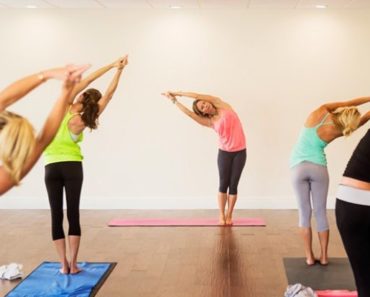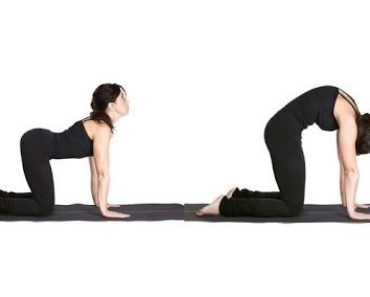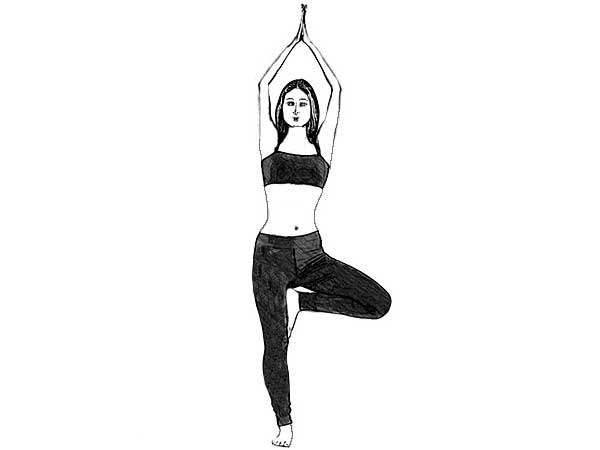
Vrikshasana or the pose of a tree comes from the amalgamation of two words: Vriksha which means tree and Asana or pose or posture. This asana is an easy Asana and beginners should be able to easily master it. Here, we will see how to perform it and the benefits that the body derives from it.
Table of Contents
Benefits of practicing Vrikshasana
- One of the foremost benefits of performing Vrikshasana is augmenting a sense of balance in the body. And it is not just physical balance that I am talking about. It encompasses the mind and soul too. A balanced body leads to the solution of quite a few ailments, mainly about the muscular-skeletal structure.
- A sense of equilibrium is set in the mind
- Vrikshasana is known to improve concentration. Once you have attained perfect balance, the mind focuses solely on staying balanced. Hence, an increase in concentration becomes improbable.
- While performing Vrikshasana, there is much stress on the spine and the body is stretched. There is a direct influence on the back muscles which leads to its strengthening. The more the back muscles are worked upon, the greater is its development.
- Vrikshasana is known to cure sciatica, though there is no direct proof of it. However, mild to medium pain is said to have been relieved once the individual has been through a performance of Vrikshasana, routinely.
- The entire procedure of Vrikshasana involves balancing the body with a single leg. This makes the legs strong. Also, as mentioned earlier, it does improve the balance of the body. Strong legs are a prerequisite for a healthy body.
- In addition to strong legs, Vrikshasana also opens up the hip. A strengthened hip provides equilibrium to bodily movements. Weak hips lead to greater disabilities and that needs to be avoided at all costs.
- The Vrikshasana improves neuromuscular coordination greatly. This is a combination of your brain suggesting to stay still while the muscles work together to keep the body still. Neuromuscular stability enhances the response time of the individual. It promotes agility and helps the human mind become more focused.
- The knee joints benefit from Vrikshasana by becoming stronger.
- Flexibility increases manifold.
- A study did reveal that the thorax deepens too by performing Vrikshasana over a longer period in time.
- Those with flat feet should perform this Asana to reduce its effect.
- The sense also improves over a period in time if the regular performance of Vrikshasana is undertaken.
Vrikshasana and Science
The basic premise of the Asana is to provide the body with a sense of balance. That can only arrive if the mind agrees to it. If the mind wanders, the body will follow suit too. Hence, the mind must focus on the given task. This will lead to the body also making every attempt to provide balance to itself. This interplay of the nervous system with the muscular-skeletal system improves mind-body coordination.
However, there is more to Vrikshasana. It improves the posture, increases the flexibility of the body, strengthens the joints and relaxes the mind. There is a certain toning of the arms and the shoulder too.
Metabolism is greatly improved through the enactment of this Asana.
Precautions
- The foot needs to be placed on the side of the inner thigh and not on the knee. The knee is a sensitive area and any extra pressure on it may lead to injuries.
- It is also beneficial to understand the importance of flexing the back as much as possible. This is a stability asana and hence slouching will not help. It may also lead to disbalance and a fall.
- Anybody with high blood pressure needs to avoid this asana. A longer duration of the arms over the head may lead to the shooting of pressure and that needs to be avoided. An alternative to that would be to simply keep the namaskar mudra in front of the body and go back to the beginning position from there.
- Also, anybody with an issue related to vertigo needs to have an accompaniment. They may face balance issues while attempting to perform the Vrikshasana.
- Anybody suffering from insomnia and migraine needs to avoid doing this posture.
- A practitioner of any asana needs to be reasonably fit to be able to perform them. Doing them while carrying an injury may lead to graver consequences, so please avoid at any cost.
Stepwise Guide: How to do Vrikshasana
Step 1: Stand straight, tall and relaxed. The hands need to be beside you.
Step 2: Now slowly bring the right leg up and place the right foot high up on the inner thigh of the left leg. Place the sole firmly to avoid slippages.
Step 3: Take a moment to check your balance. The left leg should be able to hold you up. One of the intrinsic traits of Vrikshasana is balance. Maintain that whilst you are performing the same.
Step 4: Once you have checked the balance, do the namaskar mudra, starting from the front of the body and then slowly taking it over the head.
Step 5: Stretch your arms as high as possible, keeping the namaskar mudra intact. Stay in that position for 5 breaths.
Step 6: Now keeping the balance perfect and slowly exhaling, bring down the namaskar mudra and place it in front of you, albeit the starting position.
Step 7: Slowly bring the right leg down and place it back on the ground.
Step 8: Stand tall, straight with the arms by your side, as you were at the beginning.
Step 9: Now repeat the same with your left leg.
Advice for beginners
This is a relatively easy asana to perform. However, follow the precautions and the steps closely. Even easy looking asanas, if not performed correctly can lead to injuries. You would want to avoid that at all costs.

